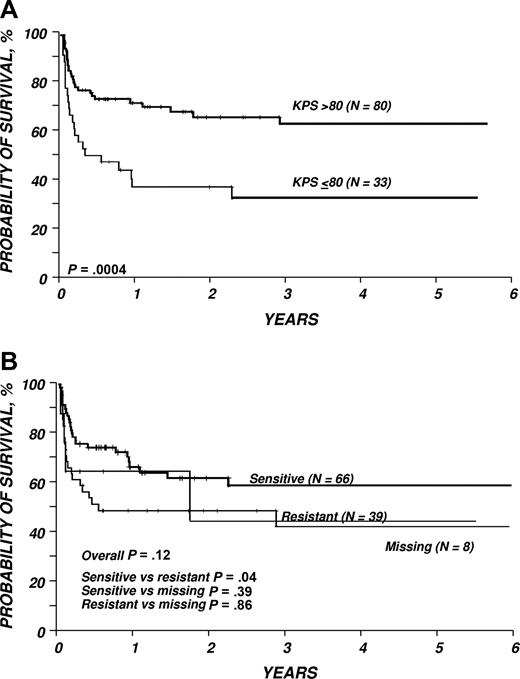To the editor:
Khouri et al from the M. D. Anderson Cancer Center (Houston, TX) report the long-term outcome of 47 patients with chemotherapy-sensitive follicular lymphoma who received a nonmyeloablative allogeneic stem cell transplantation from predominantly (96%) sibling donors. With a median follow-up of 60 months, only 7 patients had died from complications. The 5-year overall survival was 85%.1 Median age at transplantation was 53 years, and all patients had chemotherapy-sensitive disease.
The authors state that “these results compare favorably to earlier studies using nonmyeloablative conditioning which were associated with treatment-related mortality up to 40%.” Here they refer to a registry study by the Center for International Blood and Marrow Transplant Research (CIBMTR).2 This is not an an appropriate comparison. The patients treated by Khouri et al all had chemotherapy-sensitive disease, and an excellent performance status (as shown by the average very low International Prognostic Index [IPI]). By contrast, 33 of 113 patients in the original CIBMTR study had a decreased performance status that was associated with a 2.4 increased risk of treatment-related mortality. Sixty-six of 113 had chemotherapy-resistant disease, which was also associated with a doubling of treatment-related mortality. Survival curves illustrating the effect of performance status and disease sensitivity from this early study are shown in Figure 1 (not included in the original publication). The importance of performance status and disease sensitivity for the outcome of allogeneic transplantation has been confirmed numerous times and by multiple groups.3-6
Influence of performance score and disease sensitivity on outcome of myeloablative transplantation. (A) Performance score. (B) Disease sensitivity. (Based on data from van Besien et al.2 )
Influence of performance score and disease sensitivity on outcome of myeloablative transplantation. (A) Performance score. (B) Disease sensitivity. (Based on data from van Besien et al.2 )
For patients with an excellent performance status and chemotherapy sensitive-disease, the outcome with allogeneic transplantation is excellent, whether reduced intensity or myeloablative conditioning is used,3,7 and the study by Khouri et al provides further evidence for this. It does not provide evidence that nonmyeloablative conditioning is superior. In the most recent update from the CIBMTR on follicular lymphoma, the overall treatment-related mortality at 1 and 3 years was 23% to 28%, with no difference between myeloablative and nonmyeloablative allogeneic transplantations.3 A careful comparison of the quality of life, late recurrences, and late complications among survivors is required to establish superiority.
Unfortunately for the majority of patients with follicular lymphoma referred for allogeneic transplantation, chemotherapy-resistant disease is the reason for referral. Such patients were not included in the Khouri study and, as discussed in the manuscript, it is unlikely that nonmyeloablative transplantation will cure such patients. But as reported more than a decade ago by the same M. D. Anderson Cancer Center group, myeloablative conditioning may be curative.8,9
Authorship
Conflict-of-interest disclosure: The authors declare no competing financial interests.
Correspondence: Koen van Besien, University of Chicago, 5841 South Maryland Avenue, Chicago, IL 60637-1470; e-mail: kvbesien@uchicago.edu.


This feature is available to Subscribers Only
Sign In or Create an Account Close Modal